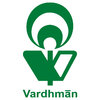Shift Officer
10+ Shift Officer Interview Questions and Answers

Asked in Tex Corp.

Q. Which chemicals are used in polyester dyeing to control pH, and why?
Acetic acid is commonly used in polyester dyeing for pH adjustment.
Acetic acid is used to lower the pH in polyester dyeing baths.
Maintaining the correct pH level is crucial for achieving desired dyeing results.
Acetic acid helps in improving color fastness and dye uptake in polyester fibers.
Other chemicals like acetic anhydride or formic acid can also be used for pH adjustment in polyester dyeing.

Asked in Tex Corp.

Q. What is the formula for ∆E, and what are ∆a, ∆b, and ∆l?
The formula for ∆E is the change in energy, with ∆a, ∆b, ∆l representing changes in different variables.
∆E = ∆a + ∆b + ∆l
∆a, ∆b, ∆l represent changes in different variables
For example, if ∆a = 2, ∆b = 3, ∆l = 1, then ∆E = 2 + 3 + 1 = 6
Shift Officer Interview Questions and Answers for Freshers
Asked in Auro Spinning Mills

Q. What type of yarn is manufactured, and what are its parameter quality machine specifications?
Yarn manufacturing involves various types, each with specific parameters affecting quality, such as fiber type and spinning method.
Types of yarn include cotton, polyester, wool, and blends.
Quality parameters include strength, twist, and evenness.
For example, cotton yarn is known for its softness and breathability.
Polyester yarn is durable and resistant to shrinking and stretching.
Wool yarn provides warmth and elasticity, ideal for winter garments.

Asked in Nahar Spinning Mills

Q. .what is count . What is yarn. What is procedure of making yarns.
Count refers to the number of yarns in a given length or weight. Yarn is a continuous strand of fibers used for weaving or knitting.
Count is measured in various units such as denier, tex, or cotton count.
Yarn can be made from natural fibers like cotton, wool, silk, or synthetic fibers like polyester, nylon, or acrylic.
The procedure of making yarn involves spinning fibers together to create a continuous strand.
This can be done using a spinning wheel or a spindle, and can be do...read more

Asked in Tex Corp.

Q. What is the process of polyester dyeing?
Polyester dyeing is a process of coloring polyester fibers or fabrics using specific dyeing techniques.
Polyester dyeing involves preparing the fabric by scouring and bleaching to remove any impurities or finishes.
The fabric is then dyed using disperse dyes, which are specifically designed for polyester fibers.
The dyeing process can be done using various methods such as exhaust dyeing, continuous dyeing, or printing.
After dyeing, the fabric is rinsed, dried, and finished to en...read more
Asked in Vardhman Yarn & Threads

Q. What are the types of cotton, and what is the percentage of cotton waste?
Types of cotton include American Upland, Pima, and Egyptian cotton. Cotton waste % varies depending on the manufacturing process.
Types of cotton: American Upland, Pima, Egyptian
Cotton waste % varies based on manufacturing process
Examples: comber waste, card fly, roving waste
Shift Officer Jobs


Asked in Vardhman Auro Textiles Ltd

Q. How many yards are in one meter?
There are 1.09361 yards in one meter.
1 meter is equal to 1.09361 yards.
To convert meters to yards, multiply by 1.09361.
For example, 5 meters is equal to 5.46805 yards.

Asked in Tex Corp.

Q. How do you use CCM?
CCM stands for Customer Communication Management, which is a strategy to improve communication with customers.
CCM involves using technology to streamline and personalize customer communications.
It includes tools like email marketing, SMS messaging, and customer feedback systems.
CCM helps businesses deliver consistent messaging across all channels and improve customer satisfaction.
An example of CCM in action is a company sending personalized emails to customers based on their ...read more
Share interview questions and help millions of jobseekers 🌟

Asked in Vardhman Auro Textiles Ltd

Q. What is a spinning flow chart?
A spinning flow chart is a visual representation of a process or system where the flow of information or tasks continuously loops or cycles.
Spinning flow charts are often used to show repetitive processes or feedback loops.
They can be used in various industries such as manufacturing, software development, and project management.
Examples include a Kanban board for tracking tasks in agile project management or a production line flow chart in a manufacturing plant.

Asked in Sharadha Terry Products

Q. What is the cycle process?
The cycle process is a series of steps or stages that are repeated in a continuous loop.
The process involves a set of actions that are repeated in a specific order.
Each cycle builds on the previous one and leads to the next.
The process can be used in various fields, such as manufacturing, software development, and project management.
Examples include the Plan-Do-Check-Act cycle, the Waterfall model, and the Agile methodology.

Asked in Universal Chemical

Q. How does a centrifugal pump work?
Centrifugal pump works by converting mechanical energy into kinetic energy to increase the fluid's velocity and pressure.
The pump has an impeller that rotates to create a centrifugal force.
Fluid enters the pump through the suction nozzle and is directed to the impeller.
The impeller's rotation causes the fluid to move radially outward, increasing its velocity.
The fluid then enters the volute casing, where the velocity is converted into pressure.
The fluid is then discharged thr...read more

Asked in Universal Chemical

Q. How do you create a vacuum?
Vacuum can be created by removing air molecules from a closed space.
Use a vacuum pump to remove air molecules from a closed space
Create a seal around the space to prevent air from entering
Reduce the pressure inside the space to create a vacuum
Examples: vacuum cleaner, vacuum packaging, vacuum tube technology

Asked in TRL Krosaki Refractories

Q. Describe your working process.
The working process involves systematic planning, execution, and evaluation to achieve operational goals efficiently.
1. Planning: Define objectives and strategies, e.g., creating a shift schedule based on staff availability.
2. Coordination: Communicate with team members to ensure everyone is aligned, e.g., holding a pre-shift briefing.
3. Execution: Implement the plan while monitoring operations, e.g., overseeing daily tasks and addressing issues as they arise.
4. Evaluation: A...read more

Asked in UltraTech Cement

Q. Are you proficient in Excel?
Yes, I am proficient in Excel and can utilize its features for data analysis and reporting.
I can create and format spreadsheets for data organization.
I am skilled in using formulas like VLOOKUP and SUMIF for calculations.
I can create pivot tables to summarize large datasets effectively.
I have experience in generating charts and graphs for visual data representation.
Interview Questions of Similar Designations
Interview Experiences of Popular Companies








Reviews
Interviews
Salaries
Users

















